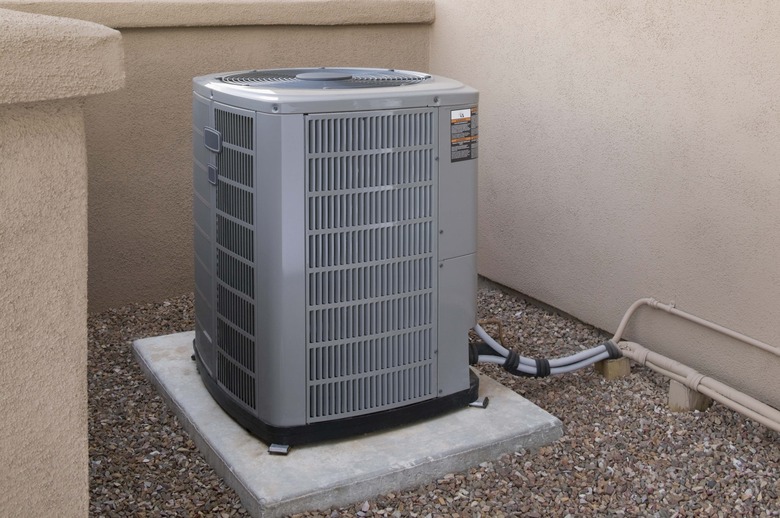What To Use For An AC Condenser Pad For An Air Conditioner
An AC condenser pad is a necessary part of the outdoor air conditioning condenser setup. It might seem like a simple HVAC component that doesn't do much, but it protects your air conditioner in many ways. The slightly raised platform is usually a little bigger than the outdoor air conditioner unit and can be made of concrete or composite materials. Not having a proper pad can shorten the life of your central air unit.
Purpose of AC Condenser Pads
Purpose of AC Condenser Pads
The AC condenser pad keeps your air conditioning raised off the ground, which protects it from things that could damage it. Since it's elevated, the AC condenser isn't exposed to moisture or puddles on the ground. It also keeps pests away from the unit.
Another benefit is the stability it provides to keep the air conditioner level. A level condenser can help you save money on air conditioning by making it work more efficiently. The sturdy, stable surface also minimizes some of the vibrations from the unit, which makes it quieter, keeps it from sinking into the ground and helps prevent damage.
Concrete Condenser Pads
Concrete Condenser Pads
Concrete is a traditional material for condenser pads. It's ideally suited for large condenser units since it can well support the increased weight. With that strength comes extra weight from the pad, which can result in settling over time. Settling can sometimes damage your HVAC system by putting strain on the tubes and lines leading to the unit. You can pour your own concrete condenser pad but make sure the ground is completely level before pouring it.
Composite Condenser Pads
Composite Condenser Pads
Recycled plastic and rubber are common materials used in composite condenser pads and can come in different colors. Composite pads are highly durable, but they're best for smaller condenser units that are lighter. These materials make the pads easier to handle because they're lighter, and you can often buy them at home improvement stores for quick and easy installation. They're designed to withstand weather, and they're often made to be UV-resistant to prevent fading or damage from the sun.
Specifications for a Condenser Pad
Specifications for a Condenser Pad
Your condenser pad needs to be large enough to fully support your air conditioner. Choosing a pad that's slightly larger than your unit is important to help give it enough stability. The height of the pad is usually around 3 inches or a little higher — just enough to slightly elevate the unit off the ground. Local building codes might dictate the size and thickness requirements for the pad as well as placement and other specifications.
Choosing a Condenser Pad
Choosing a Condenser Pad
Compared to the cost of the air conditioner, the pad is a relatively inexpensive component, but it can protect your AC and make it last longer. Deciding between concrete and composite materials often depends on the size and weight of your unit. You might need to go with traditional concrete if your unit is large and heavy. Many newer residential condensers are smaller and lighter, making composite an option. Some people like the idea of using a composite pad with recycled materials for an eco-friendly option.
If you buy a pad instead of pouring a concrete one, pay close attention to dimensions to make sure it's large enough for your air conditioner. Check the weight rating to ensure it can hold the weight of your air conditioner. If you're installing a new air conditioner, your HVAC technician should be able to give you a weight estimate and guide you through choosing a pad. Buying a waterproof and UV-resistant pad helps it hold up longer in outdoor elements.
